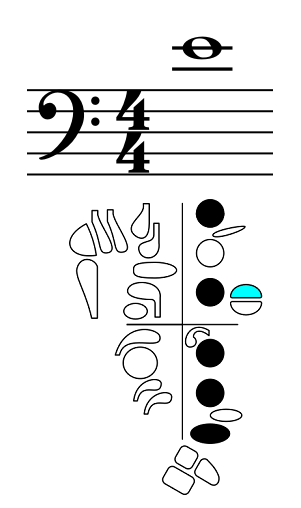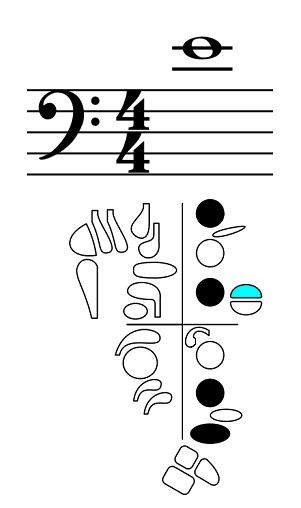Fingering

NOTE: Adding the resonance key can improve the intonation and tone quality of the upper E. However, on some bassoons, adding the resonance key makes the note too flat.
Intonation & Tone Quality
This note tends to have a thin tone quality compared to the neighboring pitches. Be sure to:
- Use your very best breath support.
- Blow very fast, cold air
- Voice a middle to high vowel shape depending on your intonation on this note.
- Experiment with the space in your oral cavity and between your teeth to find the most in-tune and resonant position for this note.
- Firm lips but soft jaws
- Most bassoonists add the resonance key on this note to help the intonation and tone quality. Play the note with and without the resonance key to see which is best in tune and which has the best tone quality.
Matching Pitch
Maintain your breath support and experiment with adding the resonance key and with voicing to develop consistently accurate intonation.

E major Segment
E major is a tricky key for the fingers and for intonation.
- Play this scale segment slowly to work on coordination and ease of finger motion.
- Experiment with each of the 3 fingering options for C# to see which works best for you in this key.

Slur Fingering for upper E
Upper E is another note that needs some extra help when slurring to it. Use the same trick for E3 that you used for Eb in the previous lesson. Leave off the right-hand index finger when you need to slur to upper E.

Etude for upper E
This etude is a transposed version of Etude for upper Eb. It is a half-step higher and like the version in Eb, has two bars that require slurring from middle E to the upper E.



Feedback/Errata